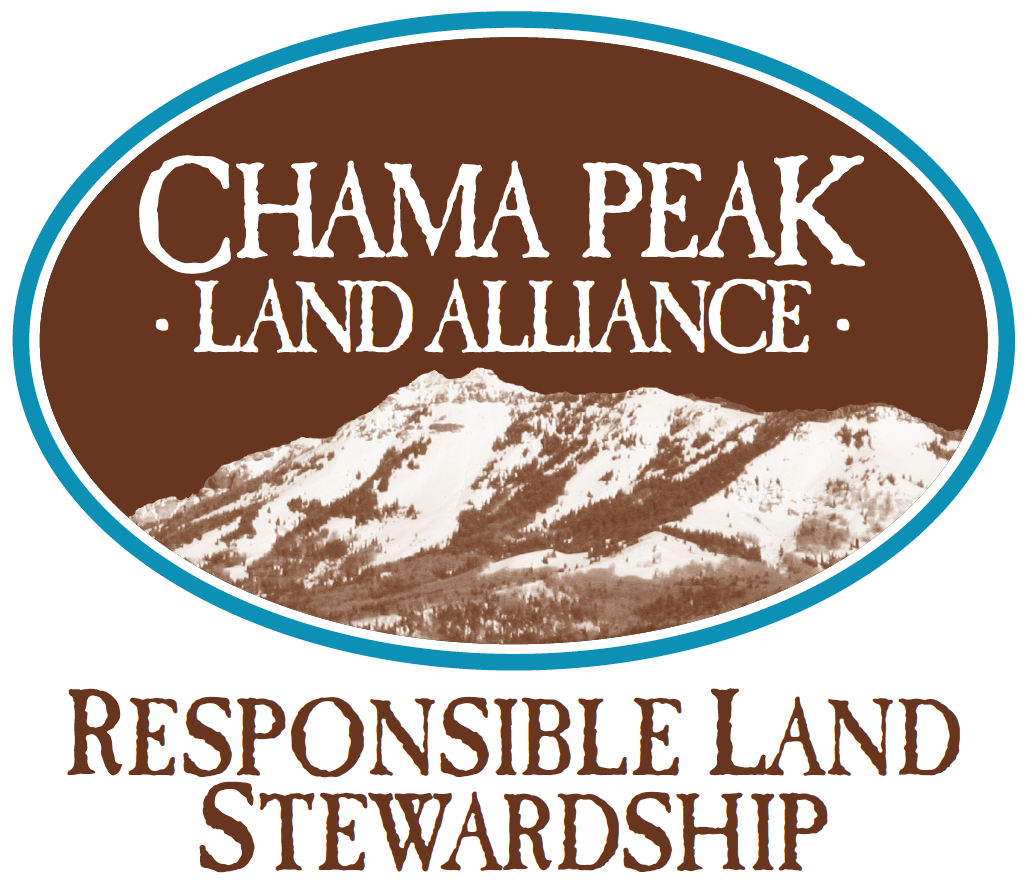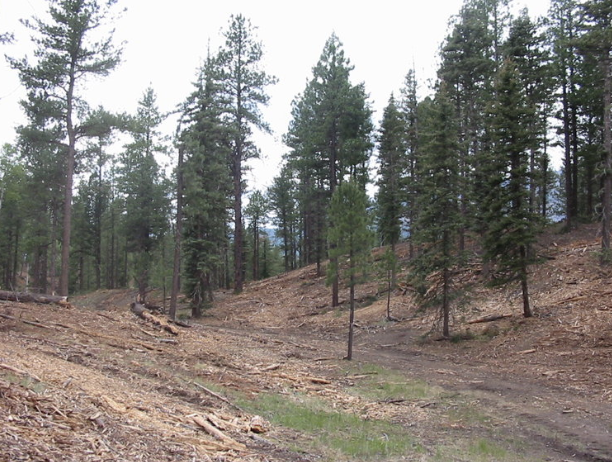FOREST AND WATERSHED HEALTH
The Alliance is working to build resiliency in the San Juan – Rio Chama Watershed region of southern Colorado and northern New Mexico. Our primary resource concern is water availability and water quality degradation due to decades of fire suppression resulting in overgrown forests that are susceptible to catastrophic fire outside the natural range of variation. Resulting debris flows that reduce the efficacy and overall function of the San Juan – Chama Diversion tunnels and reservoirs have the potential to degrade water quality in tributaries of the Rio Chama Watershed impacting downstream water users, including the cities of Albuquerque and Santa Fe. Secondary concerns include soil quality degradation, inadequate fish & wildlife habitat, degraded plant conditions decreasing agriculture opportunities, and climate change.
In order to address this resource concern taking into consideration climate change impacts, we are utilizing “resiliency” thinking rather than a more traditional restoration approach that would mimic pre-settlement conditions. Resiliency addresses our approach to conduct forest and watershed health treatments that allow the system to “bounce back from disturbance while maintaining the same basic structure and function into the future.”
The Alliance is also a key partner in the San Juan-Chama Watershed Partnership, a community-based partnership that is working to increase the resiliency and ecosystem health of the watershed. The San Juan Headwaters Forest Health Partnership also works in the Navajo and Blanco basins in Colorado.
CURRENT AND RECENT PROJECTS
NAVAJO-BLANCO RESILIENCY
In 2015, the Alliance partnered with The Nature Conservancy’s Rio Grande Water Fund to improve forest health and restore wildlife habitat through thinning and prescribed fire treatments on private land. More than 1,000 acres were treated over three years in the Alliance region. Building on this successful program, the Alliance is implementing a $1 million investment in thinning and prescribed fire treatments on private land in the Navajo and Blanco basins in southern Colorado beginning in 2018. This work is guided by the "Navajo-Blanco Watersheds Resilience Strategy for the San Juan Chama Project Source Watersheds", an analysis of wildfire risk in the Navajo and Blanco Basins created by a multi-partner group of conservation agencies and non-profits (view the Appendices).
This funding is provided by the Albuquerque Bernalillo County Water Utility Authority in partnership with the Rio Grande Water Fund. The Bureau of Land Management's San Juan-Chama Diversion Project is located partly in the Navajo and Blanco basins and draws 11,000 acre-feet of water from the San Juan basin through diversion tunnels under the continental divide into the Rio Chama Watershed, which enters the Rio Grande north of Espanola, NM. This diversion provides water to 1/3rd of New Mexico's downstream residents, including 90% of Bernalillo County's water. A severe wildfire in these drainages could be devastating to diversion infrastructure and the water supply; a fact which makes this a worthwhile proactive investment for the water utility. Much of the land close to the Navajo and Blanco rivers is privately owned, making the Alliance the go-to partner for on-ground implementation.
To date, the Alliance and landowner partners have thinned well over two thousand acres with mastication, lop and scatter, and/or chipping treatments. Additional acres are being planned for prescribed fire in the coming years.
Read a fact sheet about this project and overall forest health here.
Curious what the US Forest Service is doing in the Blanco Basin on public lands? Read the recently signed Decision Memo titled "2-3-2 Landscape Area Blanco Basin Vegetation Management Project".
Watch a video about our previous collaboration with the Rio Grande Water Fund and Fire Learning Network here.
Pre-treatment forest condition. Many small trees can act as "ladder fuels" during a fire, increasing the chance fire will reach the tree canopy. A high number of trees per acre also means trees compete more strongly for light and water and less sunlight reaches the forest floor, reducing grass cover.
Immediate post-treatment forest condition. Trees and brush were masticated, or ground up, by heavy equipment. The resulting debris will rot and grass cover will increase with the increased sunlight. More space between trees means trees compete with each other less and wildfire is less likely to reach the tree canopy.
PRESCRIBED FIRE TRAINING EXCHANGE (TREX)
A Prescribed Fire Training Exchange (TREX) is an event with three goals: training, treatment, and outreach. These typically 7 to 14 day events bring together wildland firefighters, landowners, students, resource professionals, and others to conduct prescribed burns on federal, state, local government, or private land. Attendees typically have a need for training to advance their skills or qualifications, and in exchange for this training provide an short-term increase in local capacity to implement prescribed fire projects. A TREX event also provides an excellent opportunity to engage and inform community members, landowners, legislators, and others on why prescribed fire management is needed and how burns are professionally conducted.
In May 2017, the Alliance hosted a TREX in Chama, NM with the assistance of partners including the Nature Conservancy's Fire Learning Network and the San Juan National Forest Pagosa Ranger District. The 10-day event completed 156 acres of broadcast burning on private and federal land and burned 1,130 tons of piles left over from thinning treatments on private land. Participants came from as far away as Spain and Indonesia and as close as Pagosa Springs and Chama.
Prescribed Fire Training Exchanges provide an excellent way to build local fire capacity, strengthen partnerships, provide training and outreach to firefighters and communities, and implement prescribed burns.
We hosted another TREX in Chama April 30 to May 6, 2018. While conditions weren't right to burn we still provided excellent non-fire training and learning opportunities to our firefighter participants. Read a summary of the event here.
Click here for more information about the TREX Program with the Fire Learning Network.
Two firefighters monitor the burn from the fire line during a TREX in Chama, NM in May 2017.
RIO ARRIBA CO. CWPP UPDATE
Community Wildfire Protection Plans (CWPPs) are authorized and defined in Title I of the Healthy Forests Restoration Act (HFRA). Federal and state funding for hazardous fuel reduction projects is dependent on whether a county or community has a signed and approved CWPP. CWPP’s have three main components: (1) Collaboration with all stakeholders throughout the CWPP process, (2) Identification and prioritization of hazardous fuel reduction areas and (3) addressing the treatment of structural ignitability within the CWPP area. CWPP’s are reviewed by the New Mexico Fire Planning Task Force by the 1st of December each year and if approved placed on this website.
Through our collaborative forest resiliency work with local, state, and federal partners, the need to update the Rio Arriba County Community Wildfire Protection Plan (CWPP) was identified as a high priority. The plan was nine years old and revisions were needed in order to continue applying for and receiving funds for hazardous fuels reduction in the Wildland-Urban Interface (WUI) as well as the surrounding landscape. Forest treatments outside of the WUI are critical to further protecting communities from the effects of catastrophic wildfire.
Forest treatments, such as thinning and prescribed fire, build resiliency on the landscape so that when a catastrophic wildfire outside of the natural range of variation occurs, the landscape can withstand this fire and reduce the post-fire debris flows that may occur – such as the flooding and debris flows seen after the Las Conchas Fire in New Mexico.
Chama Peak Land Alliance received a grant from the New Mexico Association of Counties (NMAC) to update Rio Arriba’s CWPP. This grant was part of the 2016-2017 Wildfire Risk Reduction Grant provided by the National Fire Plan through the Bureau of Land Management (BLM) in cooperation with the NMAC. With partners, we gathered community input through several community meetings, vetted the draft plan with community members, resource professionals, and fire departments, and the Rio Arriba County Fire Marshal, updated and revised maps with improved GIS data, and vastly improved the list of communities in the county. The plan was completed in August 2017 and approved by the County Commission.
You can read the updated plan here. Curious about other CWPPs in New Mexico? You can view them at the New Mexico State Forestry website.
Updating a CWPP is a collaborative process. The above partners made this work possible.
BIOMASS UTILIZATION
Biomass utilization is the harvest and utilization of woody biomass, often the limbs, leaves, needles and other parts of trees left as by-products of forest management, for producing bioengery or other products such as lumber, composite materials, or ethanol. Forest management, whether commercial timber sales or thinning for ecological restoration, produces significant amounts of this woody material. If left on the ground this woody biomass can increase fire risk, reduce grazing availability, or impede recreation. Often, the material is instead piled and the piles are burned, usually when snow cover makes fire danger minimal. The time and effort to pile and burn forest by-product is costly, and sometimes cost prohibitive to private landowners. If a market for this material existed it could instead be removed from the land at a cost-neutral or cost-benefit to forestry management projects, and could be a source of renewable local energy production or support economic development in other industries.
In 2012, the Alliance and Western Environmental Law Center received $50,000 from the USDA Rural Business Enterprise grant to conduct a healthy forests and wood utilization feasibility study. The Chama Peak Land Alliance brought together all the relevant stakeholders in the region to develop a biomass utilization study funded by this grant. That study was completed in June 2013 and identified emerging and appropriately scaled technologies and business models to help restore forest health, create jobs and potentially furnish renewable sources of energy. Building on that study, the Alliance is working with economic development partners, forest managers and other stakeholders to attract or develop a biomass facility.
Study Findings
Findings from the study indicate the Chama region holds considerable potential for sustainable, commercial scale biomass utilization. The development of a biomass plant in this region will help:
Protect vital watersheds by reducing forest fire risk
Reduce sediment loading after fire
Restore forest health by thinning overstocked stands
Create jobs & support state and local economies
Improve wildlife habitat
Sustain endangered silvery minnow and southwest willow flycatcher populations
Support public recreation
Produce sustainable, alternative forms of energy
Demonstrate effective partnership between the USFS and private landowners
Read the study here.
Today, the Chama Peak Land Alliance is working with the San Juan – Chama Watershed Partnership and the 2-3-2 Cohesive Strategy Partnership, two collaborative efforts bringing together public and private partners to address a multitude of management issues at different regional scales. A major focus of these groups is to support development of a regional biomass industry, as experience with this issue has shown that drawing on the people, industry, and land base of a wider area is a more feasible approach and will more likely sustain a profitable and viable biomass industry.
A wood yard resulting from forest management.






